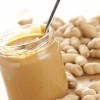A food allergy is a specific immune system reaction that happens after a person consumes what is normally considered a safe food. Reactions can range in severity from minor to fatal. This 4-page document discusses the cause, symptoms, and management of food allergies in children and adults. Written by Keith R. Schneider, Renee Goodrich-Schneider, Soohyoun Ahn, Susie Richardson, Ploy Kurdmongkoltham, and Bruna Bertoldi and published by the UF/IFAS Department of Food Science and Human Nutrition, November 2017.
http://edis.ifas.ufl.edu/fs123
Tag: Food Allergies
Dealing with Food Allergies
 A food allergy is an immune system reaction that happens after a person consumes what is normally considered a safe food. Food allergies occur more often in children than in adults: 4%–8% of those aged 4 or under and about 2% of adults are affected. Allergic reactions from food have led to over 20,000 emergency room visits per year. Annually, between 150 and 200 fatalities associated with food allergic reactions occur in the United States. This 4-page fact sheet was written by Keith R. Schneider, Renée Goodrich Schneider, Soohyoun Ahn, and Susie Richardson, and published by the UF Department of Food Science and Human Nutrition, January 2014.
A food allergy is an immune system reaction that happens after a person consumes what is normally considered a safe food. Food allergies occur more often in children than in adults: 4%–8% of those aged 4 or under and about 2% of adults are affected. Allergic reactions from food have led to over 20,000 emergency room visits per year. Annually, between 150 and 200 fatalities associated with food allergic reactions occur in the United States. This 4-page fact sheet was written by Keith R. Schneider, Renée Goodrich Schneider, Soohyoun Ahn, and Susie Richardson, and published by the UF Department of Food Science and Human Nutrition, January 2014.
http://edis.ifas.ufl.edu/fs123
Raising Healthy Children: Shellfish Allergies
 Learning that your child has a shellfish allergy can be scary. But having a plan and knowing how to treat and avoid a reaction to shellfish can ease this fear and keep your child safe. This publication explains shellfish allergies and provides information on the symptoms and how to respond if a reaction occurs. There are also tips to make it easier to manage your child’s shellfish allergy at home and away from home.This 4-page fact sheet was written by Kate Bennett, Karla P. Shelnutt, and Gail P. A. Kauwell, and published by the UF Department of Family Youth and Community Sciences, November 2013.
Learning that your child has a shellfish allergy can be scary. But having a plan and knowing how to treat and avoid a reaction to shellfish can ease this fear and keep your child safe. This publication explains shellfish allergies and provides information on the symptoms and how to respond if a reaction occurs. There are also tips to make it easier to manage your child’s shellfish allergy at home and away from home.This 4-page fact sheet was written by Kate Bennett, Karla P. Shelnutt, and Gail P. A. Kauwell, and published by the UF Department of Family Youth and Community Sciences, November 2013.
http://edis.ifas.ufl.edu/fy1402
Raising Healthy Children: Milk and Egg Allergies (FCS80020/FY1346)
 Milk and eggs are familiar, nutritious foods that most children enjoy, but these foods can cause problems for children with milk and egg allergies. If your child is allergic to milk or eggs, you need to consider steps you and your child can take to avoid these foods, and you need to make sure your child gets enough of the proper nutrients, especially if certain foods are removed from his or her diet. This 5-page fact sheet will help you learn more about milk and egg allergies and how to make sure your allergic child stays safe. Written by Jonathan Holzinger, Karla Shelnutt, and Gail Kauwell, and published by the UF Department of Family Youth and Community Sciences, February 2013.
Milk and eggs are familiar, nutritious foods that most children enjoy, but these foods can cause problems for children with milk and egg allergies. If your child is allergic to milk or eggs, you need to consider steps you and your child can take to avoid these foods, and you need to make sure your child gets enough of the proper nutrients, especially if certain foods are removed from his or her diet. This 5-page fact sheet will help you learn more about milk and egg allergies and how to make sure your allergic child stays safe. Written by Jonathan Holzinger, Karla Shelnutt, and Gail Kauwell, and published by the UF Department of Family Youth and Community Sciences, February 2013.
http://edis.ifas.ufl.edu/fy1346
Raising Healthy Children: Packing a Peanut-Free Lunch (FCS80019/FY1345)
 Peanut butter is a staple in the diets of many children, but it can cause serious problems for those with a peanut allergy. Knowing how to identify foods that contain peanuts, what to pack for school lunches, and how to reduce accidental contact with peanuts will help keep children with peanut allergies safe when they are away from home. This 5-page fact sheet was written by Sarah Schmidt, Karla Shelnutt, and Gail Kauwell, and published by the UF Department of Family Youth and Community Sciences, February 2013.
Peanut butter is a staple in the diets of many children, but it can cause serious problems for those with a peanut allergy. Knowing how to identify foods that contain peanuts, what to pack for school lunches, and how to reduce accidental contact with peanuts will help keep children with peanut allergies safe when they are away from home. This 5-page fact sheet was written by Sarah Schmidt, Karla Shelnutt, and Gail Kauwell, and published by the UF Department of Family Youth and Community Sciences, February 2013.
http://edis.ifas.ufl.edu/fy1345
Raising Healthy Children: Food Allergies (FCS8997/FY1282)
If your child with a newly diagnosed food allergy, you may feel scared, confused, and anxious. You are not alone. According to the Centers for Disease Control and Prevention, over three million children under the age of 18 have food allergies, and this number is growing rapidly. Food allergies can be caused by many different foods. The symptoms range from a mild skin rash to serious breathing problems. This 4-page fact sheet highlights the causes and symptoms of an allergic reaction, as well as the steps to take if your child has been diagnosed with a food allergy. Also included are recipes and possible changes to your family’s diet that can help make meal time easier. Written by Lauren Headrick, Karla P. Shelnutt, and Gail P. A. Kauwell, and published by the UF Department of Family Youth and Community Sciences, March 2012.
http://edis.ifas.ufl.edu/fy1282
